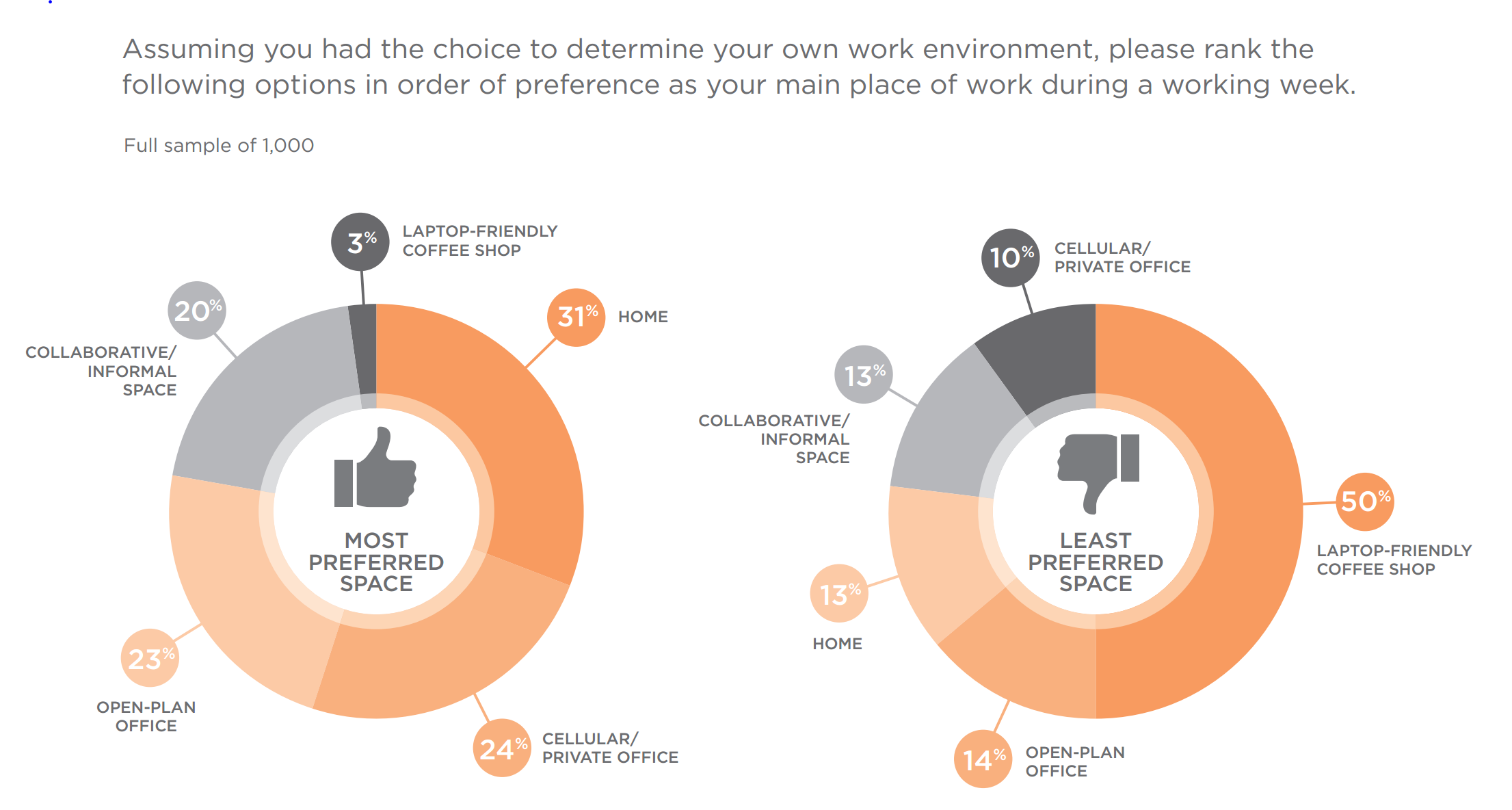
There is a lot of talk about the ‘future office’ and how we’ll all be working in the future. But the reality is that there is already a chasm between the ‘futuristic’ workplace practices & offices of a minority of employers, and those of the rest.
For example, The Edge, in Amsterdam, occupied predominantly by Deloitte, has been described as a “computer with a roof,” with the building’s own purpose-built app powering everything from the space employees park in, to their most appropriate workspace depending on their e-schedule. The app also tweaks the lighting and temperature in the immediate vicinity subject to workers’ preferences. Similarly in Israel, Intel is building an office with face recognition technology allowing the building to recognise individual employees, learning their work habits and tailoring the office environment accordingly, including ordering the cup of coffee they like in the morning.
All this may sound a tad dystopian, but the endgame of these offices is to perfect employees’ work atmosphere thereby allowing them to be more productive and happy in their work. Giving up some privacy is seen as a small price to pay.
The fundamental questions are: can occupiers justify the costs of these smart offices? Do they make their tenants’ employees more productive? And can they make tenants’ use of space more efficient? The key is evidence. For many employers, the evidence is either not there or too hard to find, to support premium rents for the best quality offices. The office is still incidental to their business model as opposed to a fundamental part of it.
Can we substantiate the notion that a genuine expansion of productive output by employees would result from housing them in a premium technology-led office?
In short, no.
The reality is that measuring productivity accurately is extremely difficult. Both at the macro-level – economists are struggling to put their finger on why overall UK economic productivity is so poor compared to our G7 peers – and at the business level, where businesses simply don’t collect the kind of detailed statistics needed to support the argument. Albeit ‘smart offices’ such as The Edge will surely provide us with evidence over time.
Are we left with a problem for office developers and investors? Perhaps not, as we can find evidence of other ways premium offices support staff and link them back to productivity.
For example, an experiment undertaken at the University of Warwick, involving over 700 participants, found that subjects that were made happier in a series of experiments, were, on average, 12% more productive than the control group in a series of tests designed to measure productivity. In other words, there is a causal link between happiness and productivity. Thus the focus then moves to: do premium offices make employees happier? And here we can find evidence.
As part of our Office Futures research we looked at two case studies of office moves, those of the law firm Fieldfisher, and private health provider Nuffield Health. Post-occupancy surveys proved that the new offices - which in both cases had been designed in conjunction with employees and had flexibility and technology at their heart – had measurably positive impacts on staff happiness and satisfaction.
We are also found evidence in our research that employees’ preferences for the type of space they work in is extremely varied, and certainly that the ubiquitous open-plan office was not a favourite amongst many - see Figure 1.
Figure 1

This tells us that employees require a diversity of office space. Not only do different tasks require different types of space; but two employees may do the same task better in a different work environment. We need space designed for both task and personality. What typically characterises the new breed of smart offices is their focus on providing employees with a variety of work settings and helping to move employees efficiently around the building depending on their tasks. It is not a giant leap to assume that employees given the most appropriate space for them to work in will be happier.
Furthermore, research from the Property Industry Alliance shows that for occupiers of offices, the cost of renting an office (and paying associated business rates), pales in comparison with their employment costs – see Figure 2.
Source: PIA Property Data Report 2016
In other words, the benefits from rental savings on an office lease, are likely to be outweighed by an even a marginal improvement in staff productivity. The challenge is that rent savings are easy to measure, with an obvious impact on the bottom-line; conversely staff happiness and productivity require human resources-led measurement techniques not typically in place in most organisations.
In conclusion:
- the offices of the future already exist;
- we have evidence that happy workers are productive workers;
- evidence suggests that modern technology-led workplaces have positive impacts on staff happiness and satisfaction;
- in the context of employment costs, office space is cheap.
It’s time to focus on making the case for best-in-class offices, we have all the evidence we need.
